It is firmly established since (at least) the 1980s that Balto-Slavic, Baltic and Slavic show a strong Uralic substrate, even though many details are still the subject of ongoing controversies. Here is how the Baltic linguistic area was described in Thomason’s Language Contact (2001):
Overall, the Baltic area has the same characteristics as the Balkan area: areal linguistic features are distributed differentially among the languages, and the features themselves vary in details of their structure. As for the sources of the Baltic features, some can be traced to Uralic and some to Indo-European, especially Germanic. The Indo-European languages most likely acquired Baltic features of Uralic origin through imperfect learning of the Indo-European languages by Uralic speakers, with shift (as in the case of Baltic and Slavic) or without shift (as in the case of Germanic); features of Germanic origin probably entered the other languages by way of borrowing, though imperfect learning is a possibility too (…).
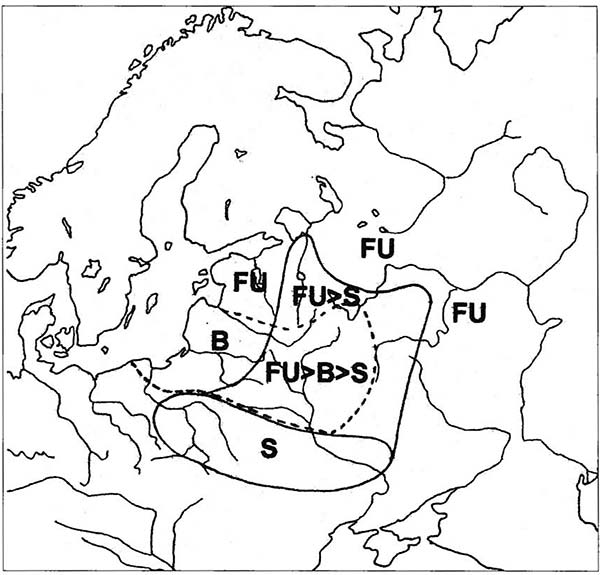
Thomason & Kaufman (1988) described their relationship around the Baltic as follows:
As Baltic and, centuries later, Slavic speakers expanded northward and eastward from their original homeland, they encountered speakers of non-IE languages, including (but probably not confined to) Uralic. At least two kinds of historical evidence indicate that speakers of various Uralic languages shifted to Baltic and Slavic languages as the Indo-European groups took over new regions.
The first kind of evidence involves inferences from linguistic geography: especially in Russia, Uralic languages are spoken in relatively small areas, isolated from each other. They thus present a classic picture of linguistic islands – relic areas in a sea of Russian. (…) The obvious historical inference, since small-group immigrations can be ruled out (before Soviet resettlings, at least) is that these speech islands are the remnants of a once widespread Uralic presence in northeastern Europe.
NOTE. For more on ancient hydrotoponymy, see more on the Eastern Baltic and on the Russification of North-Eastern Europe.
The second kind of historical evidence is documentary, though it is fragmentary for the older periods. Early chronicles show Slavic and Uralic peoples in contact by 862; Slavic expansion probably established such contacts at least by the sixth century A.D., and Baltic speakers came into contact with Uralic speakers even earlier (Veenker 1967:18). Décsy (1967:150151) reports that Finnic speakers along the southern coast of the Finnish Gulf (between Narova and Leningrad) and near the White Sea coast began shifting to Russian in the thirteenth century. And, to give a final example, Comrie (1981b:100) says of the Finnic language Livonian that its 300 remaining speakers in Latvia are all bilingual in Latvian, and that “their inevitable absorption soon into the Latvians ethnically and linguistically can be viewed as the final stage in the merging of Baltic (IE) and Balto-Finnic substratum to give rise to Latvian.” In fact, he observes, “to a large extent present-day Latvians can be viewed as linguistically assimilated Balto-Finnic speakers”.
Since language shift need not lead to interference in the target language, the question of possible linguistic consequences of these various shift processes remains open to investigation. Although it has received considerable attention (see, e.g., Décsy 1967, V. Kiparsky 1969, and Veenker 1967), the matter is still highly controversial. One reason for the controversy probably lies in the Indo-Europeanist’s traditional reluctance to accept claims of substratum interference, especially when (as in this case) many or most of the hypothesized shifts are not directly attested.
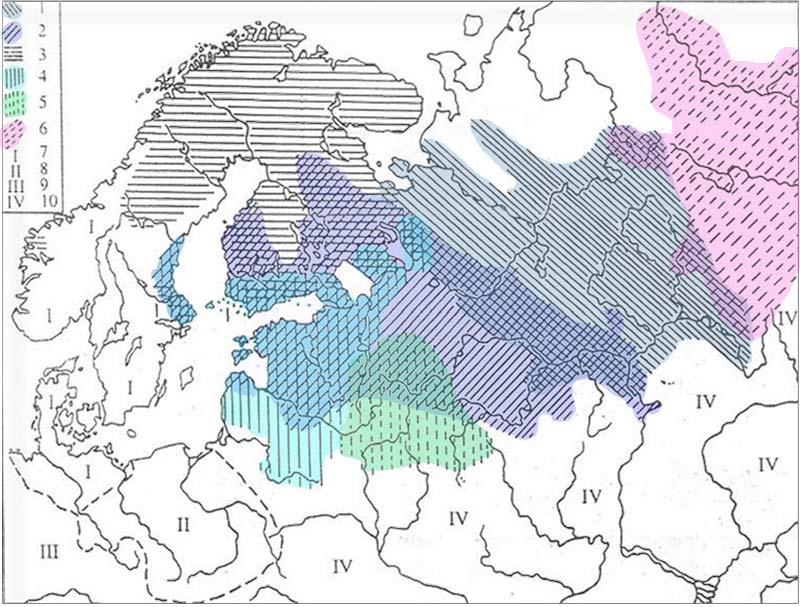
As everything in palaeolinguistics, the devil is in the details, and such long-term back and forth interactions between Balto-Slavic (Baltic in particular) and West Uralic (Balto-Finnic in particular) in the Eastern Baltic cannot have been absolutely one-sided, neither in borrowing nor in interference through shift, as the Germanic–Balto-Finnic contacts in Bronze Age Scandinavia show.
In fact, where there was yet no proof in the 1990s of Uralic borrowings into Indo-European, there is today a growing corpus of West Uralic or Balto-Finnic borrowings into Pre-Proto-Germanic, Proto-Balto-Slavic, Proto-Baltic and Proto-Slavic, among others. While the influence of languages in contact need evidently not be symmetrical – and, in fact, they are more often asymmetrical – a mutual influence in most linguistic aspects can be reasonably expected in the case of millennia-long contacts around the Baltic Sea.
Because of that, examples of language contact-induced changes or conservatism in Balto-Slavic and West Uralic dialects are becoming increasingly complex, up to a point where it is sometimes almost impossible to ascertain which language was the one that mainly influenced the other, and whether there was a single contact event or multiple ones.
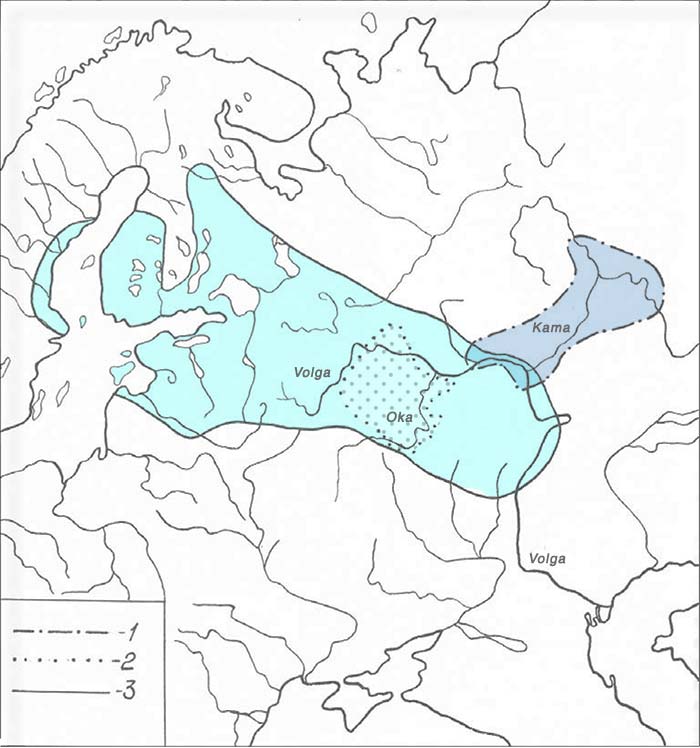
Balto-Slavic influence on Balto-Finnic
Recent paper (behind paywall) Contact-induced change in the languages of Europe: The rise and development of partitive cases and determiners in Finnic and Basque, by Luraghi, De Smit and Igartua, Linguistics (2020).
Here are interesting excerpts from the discussion (emphasis mine, stylistic changes for clarity):
The Finnic partitive has been argued to be mainly the result of Baltic influence by Larsson (1983, 2001), and Bjarnadóttir and de Smit (2013). Larsson’s hypothesis has not met with general approval, as noted by Leinonen (2015: 197), and its ramifications for the timing of Finnic(-Saami)-Baltic contacts can even be said to have been neglected in recent literature, as we will argue below. Recently, it has been criticized by Seržant (2015: 404). While Seržant (2015: 393) does allow for Baltic influence in case of the Finnic partitive for negated existential subjects, he believes the partitive of negation in general to rest on an internal development in Finnic (Seržant 2015: 392) and argues that the interaction between partitive and aspectuality spread from Finnic to Balto-Slavic instead (Seržant 2015: 387–388). Seržant furthermore argues that other features of the Finnic partitive are indigenous within Finnic (…).
Whereas it is true that the usage of the partitive-genitive was extended in Balto-Slavic when compared to other Indo-European languages, and that contacts with Finnic may account for this, we would nonetheless agree with Larsson (1983, 2001) that the main direction of influence was from Balto-Slavic to Finnic. Our arguments are the following:
- The Balto-Slavic partitive genitive has clear Indo-European roots, even if partitivity developed to the highest degree in Balto-Slavic. Contrarily, the Finnic partitive has no Uralic cognates outside of (historically) Saami and (marginally) Mordvin.
- A Balto-Slavic origin for the Finnic partitive can be harmonized with what we know of Finnic-Baltic contacts in general and their chronology.
- Though the partitive is the only Finnic morphosyntactic feature of possible Balto-Slavic origin that has been researched in detail, there may be more such features.
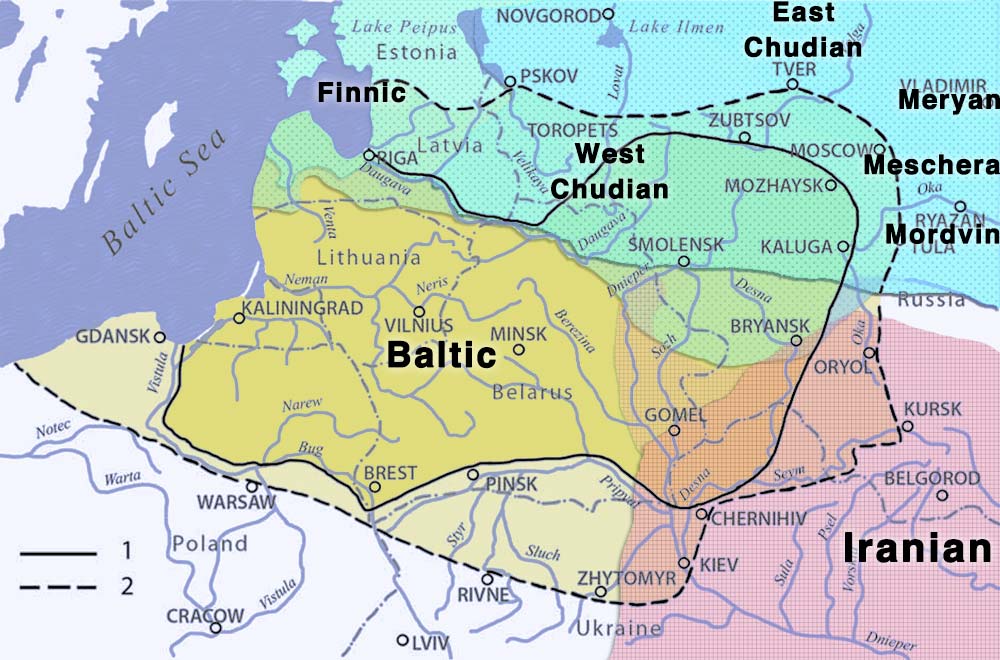
Baltic – Finnic contacts
To deal with the latest point first, Bjarnadóttir and de Smit (2013: 49–50) argue that, parallel to the grammaticalization of the Uralic ablative as an object marker, the Uralic accusative *-m, originally used for definite objects only, was extended to indefinite objects in Saami and Finnic. This development could easily be explained by contact with Baltic (which sports *-m with both definite and indefinite objects). De Smit (2015: 249–252) argues that a number of changes in the Finnic verb system may be due to the Baltic or Balto-Slavic as well. Proto-Uralic sported no voice system, however, by the time of Proto-Finnic, a morphological passive as well as a set of passive participial suffixes were introduced and integrated into a new tense/aspect system. This change closely matches Balto-Slavic and Baltic with which Proto-Finnic was in contact, furthermore, there are striking similarities between individual Finnic and Baltic passive constructions, such as the use of genitive agents (de Smit 2015: 260–264).
These features, and the whole notion of Baltic influence on Finnic morphosyntax, need more research, but there is definitely a potential to integrate the hypothesis of a Baltic-origin partitive in a wider hypothesis of morphosyntactic Balticisms in Finnic. Added to this should be Larsson’s (2001: 247) argument that a very large number of loanwords were borrowed from Baltic to Finnic, but lexical borrowing in the opposite direction is very rare. It is of course possible for lexical influence and substratum influence to have opposite directions, but contact-induced grammatical or phonological change is not necessarily substratal: grammatical and phonological features may ride piggyback on lexical borrowings.
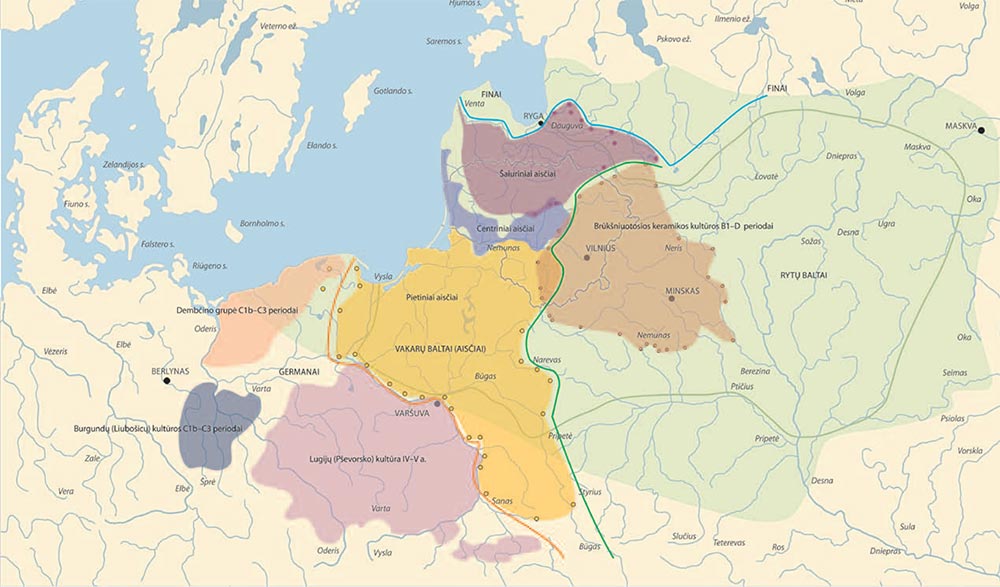
Balto-Slavic – Finno-Samic contacts
In his skeptical take, Seržant often implicitly assumes that the inherited origin of a construction in Finnic is incompatible with an explanation based on Baltic contacts. For example, the usage of the Uralic ablative in object marking in Saami and Mordvin (Seržant 2015: 348) is argued to signify that “ a question emerges whether language contact still may sufficiently be argued for” (Seržant 2015: 349). This brings us to a problem that has generally been neglected in research literature: the timing of Baltic morphosyntactic and loanword contacts. The partitive may indeed be an inherited feature in Finnic (Seržant 2015: 248): in fact, the grammaticalization of the Saami plural accusative is best explained by assuming that the partitive was used to mark plural indefinite objects aside from incremental themes.
However, this does not mean it did not arise through Baltic or Balto-Slavic influence at a language stage that preceded Finnic, i. e., Proto-Finnic-Saami. A number of early Baltic loanwords in Finnic have counterparts in Saami. Aikio (2012: 73–76) regards the Baltic loanwords in Saami as diffused through Finnic. However, as Larsson (2001: 242) points out, there is no linguistic evidence for this hypothesis. Baltic loanwords such as Finnish halla ‘overnight frost’, Saami suoldni ‘dew, haze, mist’ (from Proto-Baltic šalna ‘frost’) can clearly be reconstructed to a common Finno-Saamic form, hence must be assumed to have been borrowed during this period. Given that there are some Baltic loanwords in Saami without a counterpart in Finnic (Aikio 2012: 74), Finnic-Baltic contacts in the area of morphosyntax could well have begun in the period of the Finnic-Saami, rather than the Finnic, protolanguage.
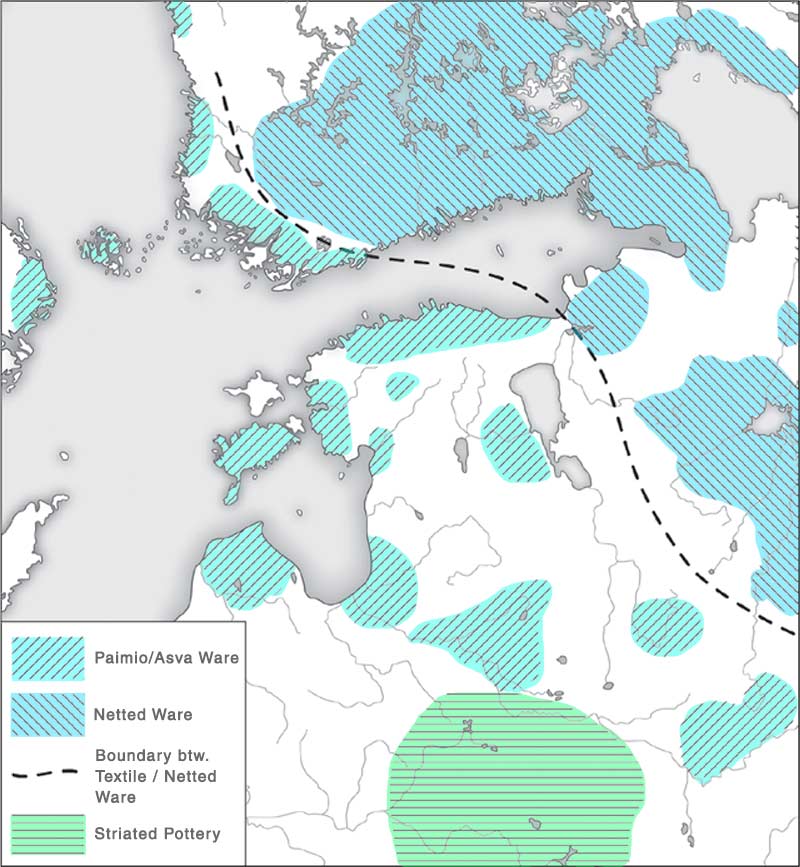
Baltic contacts with Mordvinic
Actually, there are more than thirty Baltic loanwords in Mordvin, too (Grünthal 2012), which result from direct contacts between (the ancestors of) the Mordvins and the Balts at the eastern edge of the Baltic linguistic area (Grünthal 2012: 299). Given obvious Slavic but also Turkic (Róna-Tas 1989: 766–768) influence on Mordvin, one should not overstate the historical significance of ablative-marked incremental objects in Mordvin. Their presence may have been conditioned or supported by a variety of contact languages: recall that ablative-marked incremental objects are common in Turkic languages, whose locative/ablative (*-dA) is also fortuitously very similar to the Mordvin ablative suffix.
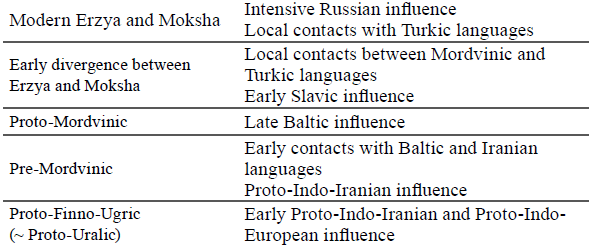
As the authors note, there is a clear difference between the Baltic or Proto-Baltic loanwords that are attested in Proto-Mordvinic or Pre-Mordvinic as described in Grünthal (2012), and the more archaic Pre-Proto-Baltic or Late Balto-Slavic ones that are attested in Pre-Balto-Finnic and Pre-Samic, which have been described as likely from an archaic third, unattested Balto-Slavic branch. The particular mixture of Baltic and Uralic or Iranian place and river names in the east (relative to the ‘more stable’ Balto-Finnic/Baltic frontier in the west), as well as the more recent loanwords in Mordvinic (without other strong evidence of language contact), both point to a recent eastward expansion of Baltic, before its replacement by East Slavic.
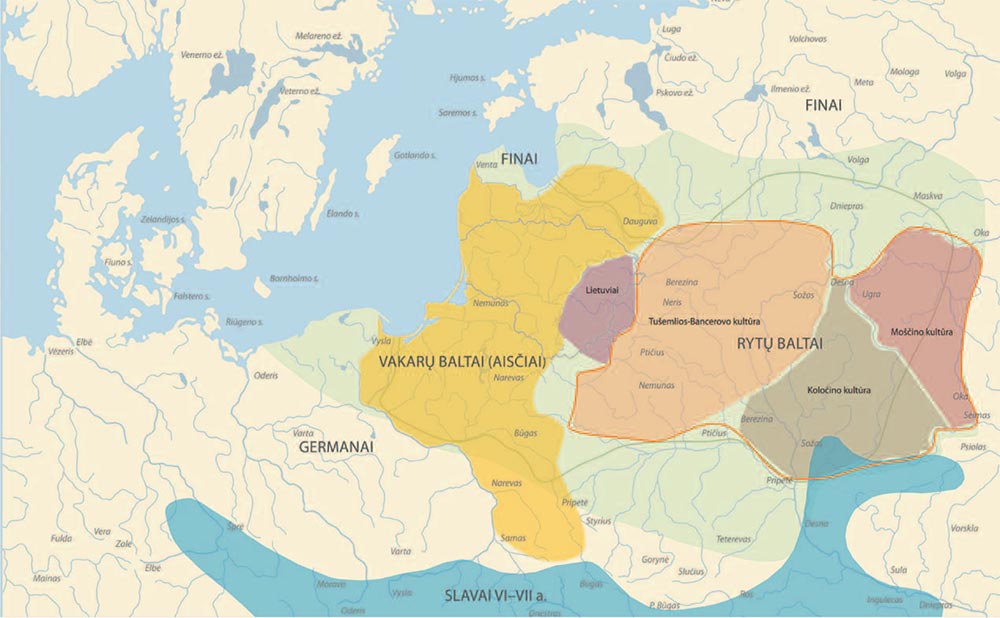
Northern Indo-European – West Uralic
When accounting for the chronology of language contact involved, one must keep in mind that the Germanic and Balto-Slavic loanword layers in Finnic and Saami represent but stages in a continuum of language contacts. Specifically, there is a layer of late Northwest Indo-European or Pre-Germanic and Pre-Baltic loanwords in Finnic and Saami (Kallio 2012: 227–228). (…) The Uralic recipient language would be a form of Proto-Uralic that had already areally spread but not linguistically diverged (Kallio 2006: 10, 17). In other words, there is evidence that a form of Indo-European directly ancestral to Germanic and Balto-Slavic was in contact with the West Uralic ancestor of Finnic, Saami and Mordvin.
Given the extensive use of the partitive-genitive in the ancient Indo-European languages, it is possible that even the earliest stages of the development of the partitive in Uralic (as incremental theme object in Mordvin) have been conditioned by Indo-European influence (for an alternative scenario, see Koptjevskaja-Tamm and Wälchli 2001: 664).
- The usage of the partitive for plural open quantity objects must have emerged during the Finno-Saami stage, perhaps through an intermediate stage of incrementality, which may be reflected in South Saami.
- The rise of partitive subjects should be reconstructed for Proto-Finnic. Given the Indo-European roots of the equivalent phenomenon in Balto-Slavic, a Balto-Slavic or Proto-Baltic origin of Finnic partitive subjects seems quite unproblematic, even though the extension of partitive subjects in Finnic is wider than its original extension in Indo-European languages.
- Concerning the partitive under negation, Seržant (2015: 392) argues that “this rule is a common Eastern Circum-Baltic innovation, not inherited from any of the ancestor languages.”
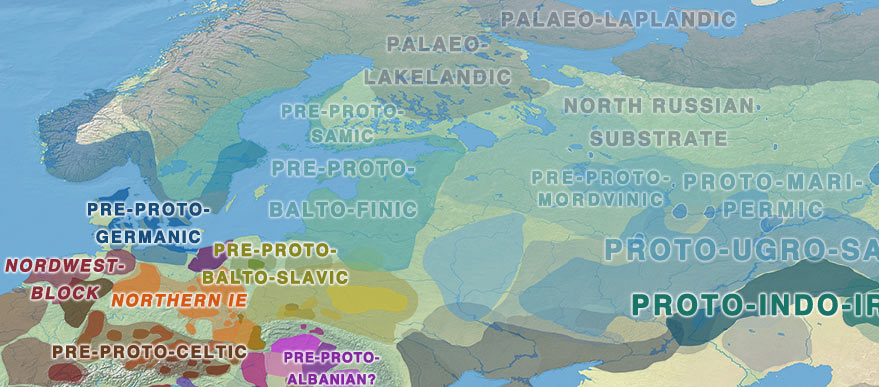
Comments
Whatever the actual origin(s) of these common developments of the Balt(o-Slav)ic and Finn(o-Sam)ic partitive, the conclusion is the same as with many other contacts between Balto-Slavic and West Uralic: both branches coexisted during the whole Bronze Age around the Baltic, and both of them were also in contact at roughly the same time with Germanic. The more archaic features of Finno-Samic borrowings from (and interference through shift with) Germanic and Balto-Slavic suggest that Balto-Finnic and Samic had already split by the Early Bronze Age, but remained in close contact in the Eastern Baltic between them and with Northern Indo-European, whereas Mordvinic was physically separated from most.
NOTE. There are some common Balto-Finnic – Mordvinic developments, supporting direct interactions through the Bronze Age Textile Ceramics – Netted Ware border and Early Iron Age Akozino-related influence.
Just a few weeks ago, Saag et al. (2020) showed that the R1a-Z93-rich Fatyanovo culture could have been the homeland of neither Balto-Slavic nor Uralic peoples, as traditionally held by certain Eastern European schools, in what is likely to represent the hardest national myth-busting paper of 2020, even surpassing the indirect confirmation that Proto-Indo-Europeans spread with an R1b-L23-rich Repin culture. Previous findings also show that:
NOTE. For the ancient distribution of specific Y-chromosome haplogroups check out the ArcGIS Web App, which incorporates an up-to-date version of the Ancient DNA Dataset.
- The initial Battle Axe culture expansion waves were rich in haplogroup R1a-Y2395, and an early West Uralic-speaking community was obviously involved as a substrate of the Pre-Proto-Germanic-speaking Bell-Beaker-related expansion to Scandinavia. This explains the infiltration and expansion of R1a-Y2395 subclades among Germanic-speaking peoples from Scandinavia.
- A second wave of Battle Axe migrants from the Eastern Baltic seems to have been rich in haplogroup R1a-Z283 (mainly within R-Z280 subclades, like R-CTS1211 or R-Z92)* – based on a single late Battle Axe sample from Latvia (Spiginas2), and on the majority of Late Bronze Age and Iron Age samples from Latvia and Estonia. Such bottlenecks appear thus to have accompanied the expansion of Textile Ceramics during the Bronze Age, spreading northwards over the Gulf of Finland and eastwards into the Volga area, as suggested by sampled Mordvins and Mordvinic-related populations.
- The infiltration and expansion of hg. N1a in Eastern and Northern Europe remains a mystery, but it is becoming more and more likely that it wasn’t one of the many lineages of sub-Neolithic cultures of Eastern Europe, and that the Seima-Turbino phenomenon represented a west-to-east population movement of R1a-Z93-rich Abashevo-related peoples. Apparently, different modern prevalent N1a subclades spread in late, unrelated waves:
- the first main one, of hg. N1a-VL29, likely with Early Iron Age Akozino warrior-traders in a patched expansion over the whole Baltic under a system of chiefdoms and family alliances – with an origin connected to Ananyino, in turn probably ultimately linked to (eastern) steppe nomads. Based on the currently available ancient DNA and the modern distribution of VL29 and L550 subclades, it is very likely that N1a-VL29 bottlenecks happened during the expansion of Finns, Balts, West and East Slavs, Vikings, Scandinavians and Russians during the Common Era.
- the second main one, of hg. N1a-Z1936, probably represent an early infiltration of native lineages from the Trans-Urals, hence possibly associated early with expansions of Ananyino-derived and Mezhovska-derived cultures, but its spread to the west might have been caused by much later nomadic expansions. In particular, the spread with Turkic peoples in Eastern Europe, including later movements as allied of the Mongols, would support the strong Turkic interference on Mari-Permic and marginally on Mordvinic.
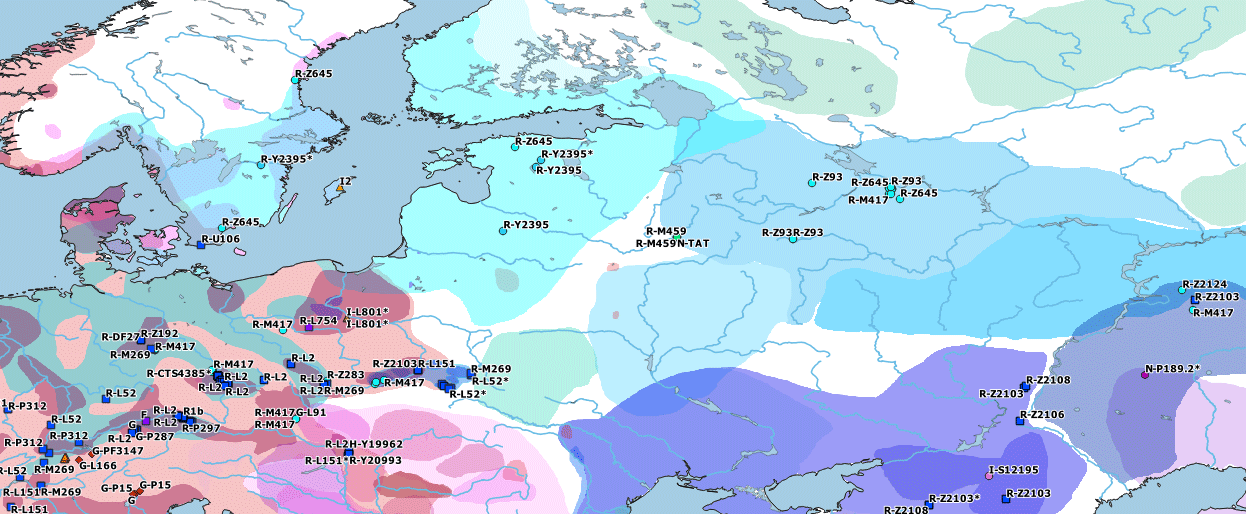
* R1a-Z282, R1a-Z280, R1a-CTS1211, or R1a-Z92 split and spread so soon after the initial Corded Ware expansion, that many subclades might be found in (Central-)Eastern Europe already incorporated into North-West Indo-European-speaking cultures during the Early Bronze Age. Some lineages will probably be also found spreading with Abashevo-related migrants through the Seima-Turbino phenomenon into the Andronovo-like cultural horizon.
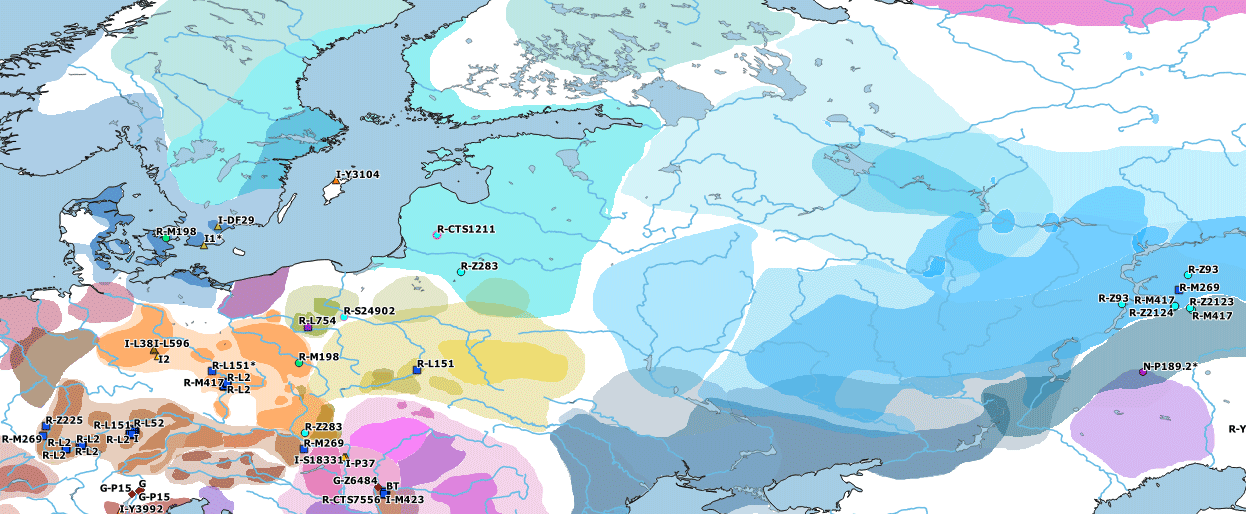
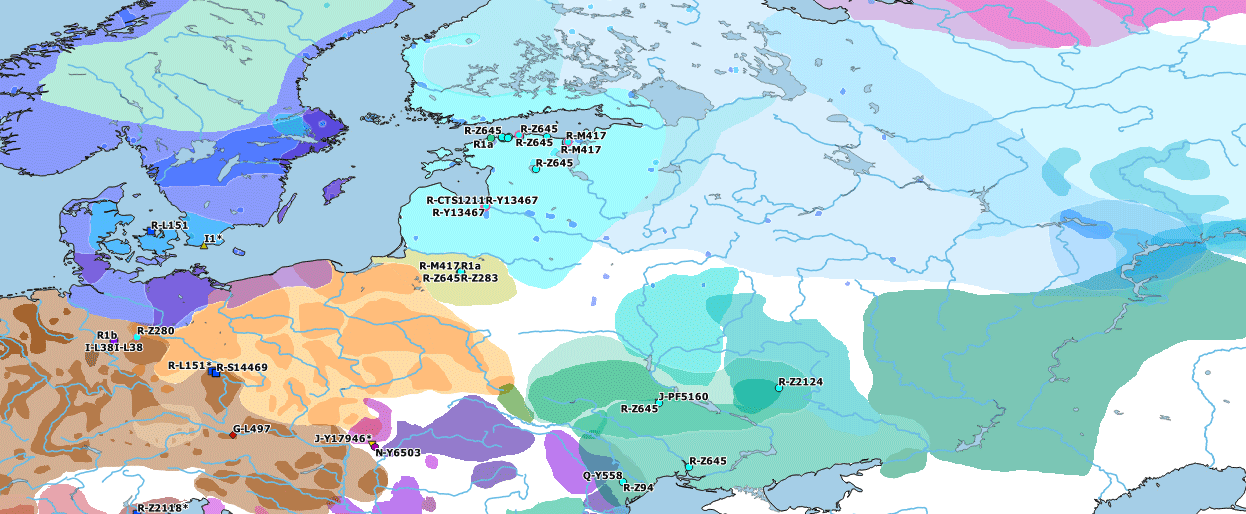
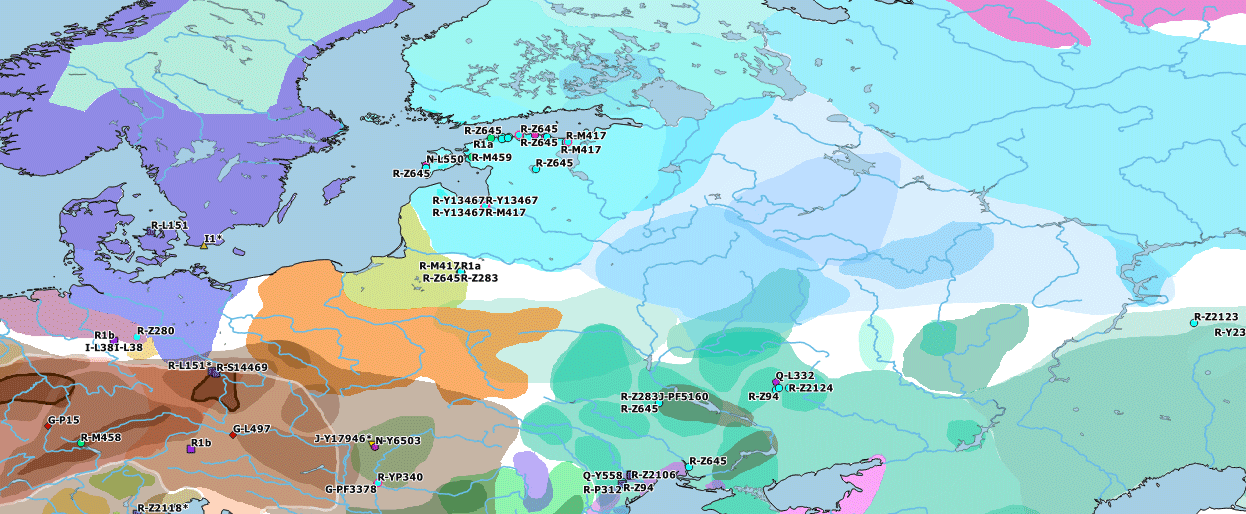
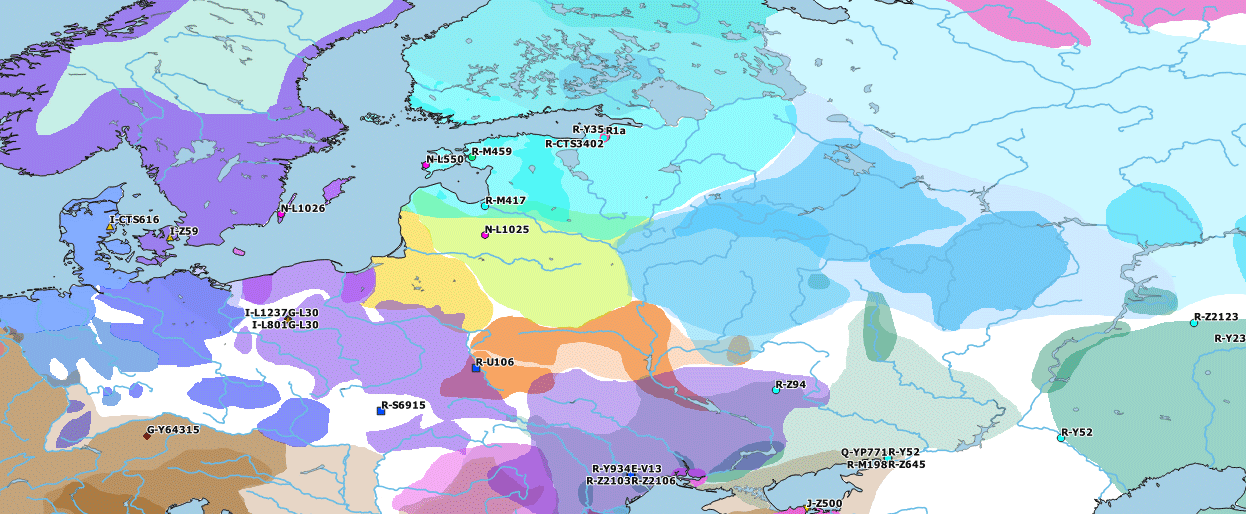
Conclusion
In light of the findings in linguistics, archaeology, and population genomics, Bell Beaker-related Germanic and Balto-Slavic replaced Corded Ware-related West Uralic in northern and north-eastern Europe, through migration, admixture, and acculturation events. It doesn’t seem likely that this imperfect but quite solid prehistoric picture will change in the future.
As I wrote recently, it is still quite common to find the occasional dodging of mutual interference between Germanic or Balto-Slavic and West Uralic, for the same pervasive general aversion and conspicuously selective skepticism described by Thomason & Kaufman more than 30 years ago.
The only relevant discussions should include whether this or that shared feature has a more parsimonious explanation as a parallel contact-induced change (or contact-induced conservatism) or as coincidentally similar but independent internal derivation events; whether the proposed influence happened in one or the other direction; whether typological similarity played a role, and thus whether these contacts were likely swift or not; how many contact events (and in which directions) would be necessary to explain the common features; which social model(s) of interaction would explain them best; or whether such proposed contacts would fit chronologically with archaeology and population genomics.
Featured image: Ethnic distribution of Finland’s neighboring areas ca. 900 AD, from Eero Kuuhari’s book The Roads of the Finnish Family (1935). Source.
Related
- European hydrotoponymy (IV): tug of war between Balto-Slavic and West Uralic
- Pre-Germanic and Pre-Balto-Finnic shared vocabulary from Pitted Ware seal hunters
- Genetic continuity among Uralic-speaking cultures in north-eastern Europe
- Baltic Finns in the Bronze Age, of hg. R1a-Z283 and Corded Ware ancestry
- R1a-Z93-rich Classical CWC-like Fatyanovo replaced Volosovo
- Early Uralic – Indo-European contacts within Europe
- Corded Ware ancestry in North Eurasia and the Uralic expansion
- Uralic speakers formed clines of Corded Ware ancestry with WHG:ANE populations
- Volosovo hunter-gatherers started to disappear earlier than previously believed